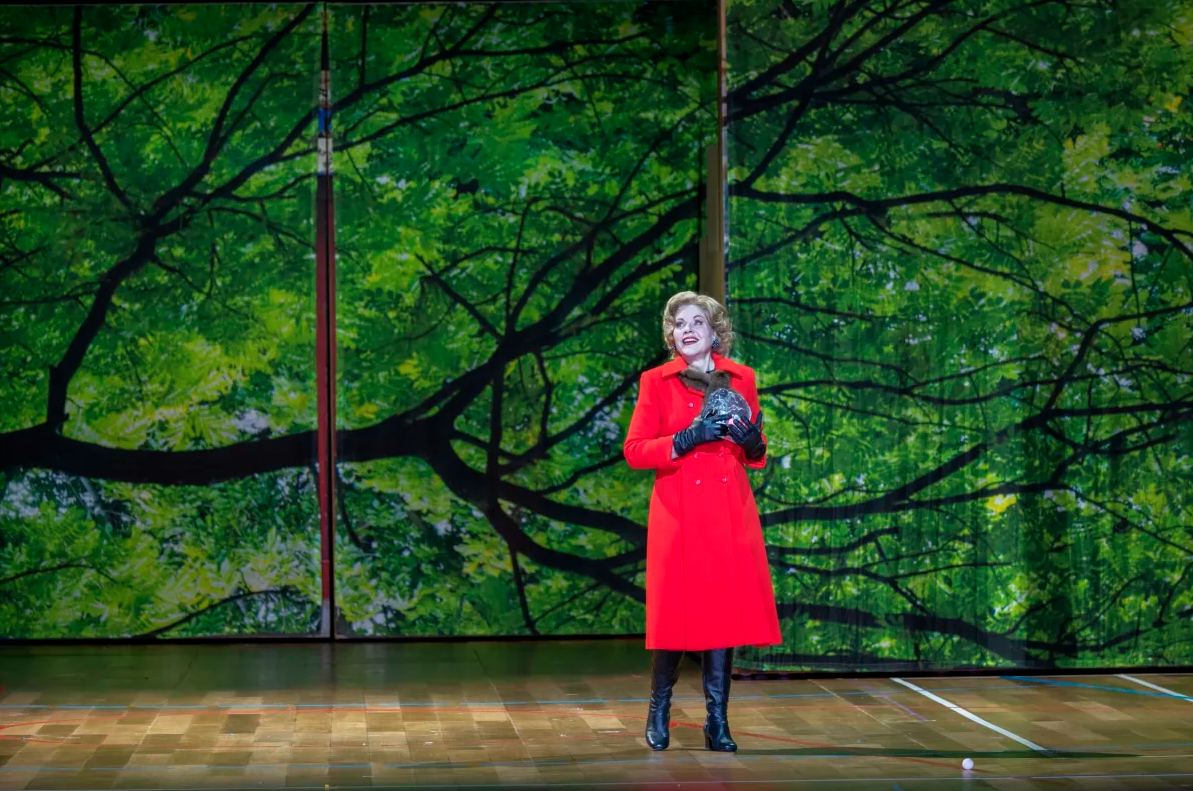Five different versions of John Adams’ opera “Nixon in China” are coming to the stages of Europe this spring.
It is not very often that an event in contemporary history becomes the subject of an opera barely fifteen years apart. But John Adams’ three-act opera Nixon in China is a case in point. Alice Goodman did not want to turn hackneyed literature into a libretto, as is often the case with operatic innovations in Europe. What premiered in Houston Grand Opera on October 22, 1987 as Nixon in China and was later performed repeatedly in Europe, begins with Nixon’s state visit to a country with which there were no diplomatic relations at the time, which attracted worldwide attention. At a time when the public could still remember the news about it and the main protagonists were still alive.
Thirty five years after the premiere this spring offers us the (almost) coinciding timing of several different productions of Nixon in China, which began on 26 February at the Dortmund Opera (where it is offered until 29 March) and is followed by Paris (where it just premiered on 25 March at the Opéra de la Bastille, until 16 April) and Madrid (the premiere will take place on 17 April, at the Teatro Real, and will remain until 2 May), not to mention the Koblenz Opera (seven performances, from 7 to 29 May) and Staatstheater Hannover (where it will remain from 3 June to 7 July).
Half a century has passed since Republican US President Richard Nixon decided that the United States had had enough of pretending, diplomatically, that the People’s Republic of China did not exist. On 21 February 1972, the president’s Air Force One landed at Beijing airport and Nixon became the first US president to set foot on Chinese soil. Nixon was getting the historic photos he wanted to be with him for posterity… before the Watergate scandal broke and he ended his term in office forced to resign.
From today’s perspective, it could be said that that meeting between Nixon and Mao Zedong marked the beginning of the shift in the balance of power in the world, in the course of which China gradually rose (with the approval of the United States, greedy to enter a potential market of over a billion potential consumers, which was certified when the People’s Republic of China was allowed to join the World Trade Organisation on 11 December 2001) to become a world power whose ambitions can no longer be ignored today by the West’s leading power. At the time, however, it was only a vague illusion that China would rise to become the main long-term competitor of the Western superpower.
For Adams, who was born into a Democratic family, Nixon, the conservative Republican, discredited by the Vietnam War and the Watergate affair, meant an enemy image, and the opera shows him to us somewhere between anti-hero epic and satire. And that image has succeeded: Nixon in China is undoubtedly the most performed American opera in history.
Musically, Nixon in China‘s success can be explained by the context: minimalism, of which Adams is considered “the fifth beatle” (behind the founding fathers, or Big Four, Riley, Young, Reich and Glass), had already disappeared from the face of the Earth for its creators, but it was then, in the late eighties, when it was beginning to be assimilated by a certain large public. And although it can by no means be considered a minimalist work, it still has the melodic repetitive elements of the genre, as well as the pulsating rhythm that characterises it at numerous moments and the use of the synthesiser. It is simpler in its composition than Adams’ later works – with Doctor Atomic, perhaps, being his biggest hit – and offers orchestrations and vocalisations that swing between extremes, delicacy and the sonic intensity of a generation that unambiguously embraces the volume of rock.
